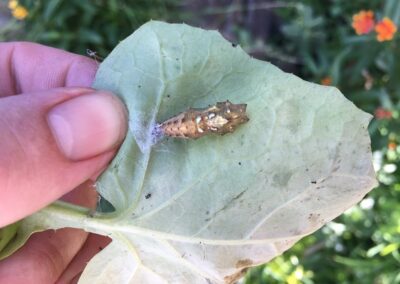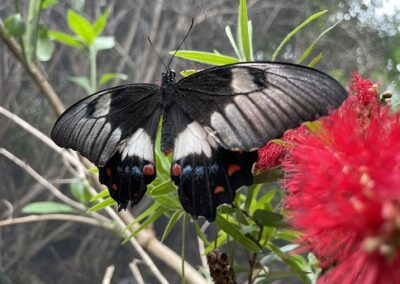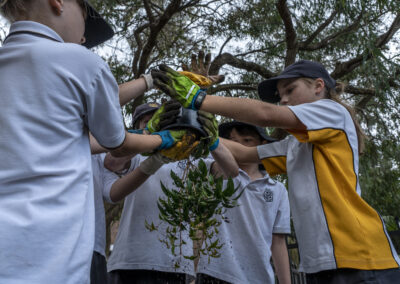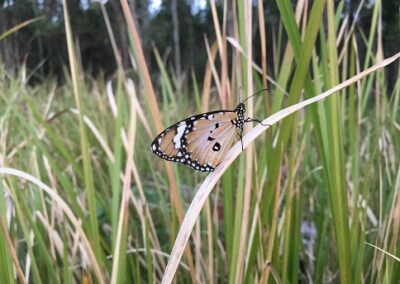
Creating a butterfly garden
Time Allocation: 45 mins *
Activity Level: Easy
Introduction
There are hundreds of different butterflies in Australia. Butterflies need nectar for their adult phase and host plants for their caterpillars. Most butterflies need specific types of host plants that only their type of caterpillar can eat. Before you begin, you will need to research the different butterflies in your area and find out what types of plants will be suitable, as well as prepare your site. Here are some suggested first steps:
- The conservation officer at your local council will be able to point you in the right direction about the types of butterfly in your area as well as what types of plants you can plant to attract butterflies and feed caterpillars.
- Use the Find a Group directory on the Landcare Australia website to get in touch with someone who may be able to help from your local group. They may also be able to help with resources and planting.
- The Australian Museum’s Butterfly and Moth Page
- Your local nursery.
Once you have selected and purchased your plants, you will need to select and prepare your garden bed. Butterflies need both sun and shelter away from the wind, so the best site for a garden bed for a butterfly garden is in a sunny, sheltered spot.
*This will be dependent on-site selection, travel time and having done prior research.
Checklist
Instructions
 Step 1
Step 1
Explain that today you will be planting a butterfly garden.
Discuss the role that butterflies play in nature. As nectar eaters, butterflies play an important role in pollination; as they visit flowers, they transport pollen from one flower to another.
Ask the students what butterflies they have seen and where they have seen them.
Display images of butterflies common in your area.
Use the activity sheet to illustrate the butterfly life cycle to help your learners identify the butterflies and caterpillars local to your area.
 Step 2
Step 2
Explain that there are two purposes for the plants that will be planted today.
The first purpose is nectar: these plants produce flowers that will feed the adult butterflies. The flowers we plant for butterflies often have clusters of small flowers – this allows the butterfly to get lots of small drinks at the one stop-over.
The second purpose is as a host plant. These may not have flowers suitable for butterflies but will instead be suitable for your local butterfly species to lay their eggs and raise their caterpillars. Discuss a butterfly local to your area and its caterpillars. Add a picture of the host plant to the activity sheet.
Use a T-chart to list the different plants and their purpose in the butterfly garden.
 Step 3
Step 3
Head outside to your prepared site.
Creating a butterfly garden can be a bit of an experiment.
Use the labels on the seedling punnets to decide on how to space your plants. Nectar plants are often planted in clumps as it helps butterflies to see them and is more inviting.
Use a trowel to dig a hole just big enough so the plant’s root section can be inserted. Tap the pot gently and squeeze the plant out without damaging the roots; place it in the hole and fill it with soil.
Create a saucer-shaped depression in the soil to act as a dam, and then water in the plants gently. Mulch around them to help reduce water loss and suppress weeds.
 Step 4
Step 4
Monitor and care for your butterfly garden.
As the plants mature, take note of the different butterflies that arrive. You may like to integrate this with our Getting the Buzz on Bees and other Beneficial Insects activity to help monitor both the butterflies but also other beneficial insects that will utilise your garden.
You may also add some other features for your butterflies, such as a damp soak (see the Water for Wildlife activity for more information).
Extension Activity
Study the life cycle of caterpillars and their transformation in more detail with a commercially produced caterpillar kit.
Create a poster of the butterflies you observe in the butterfly garden, identifying their scientific name and specific requirements such as their host plants.